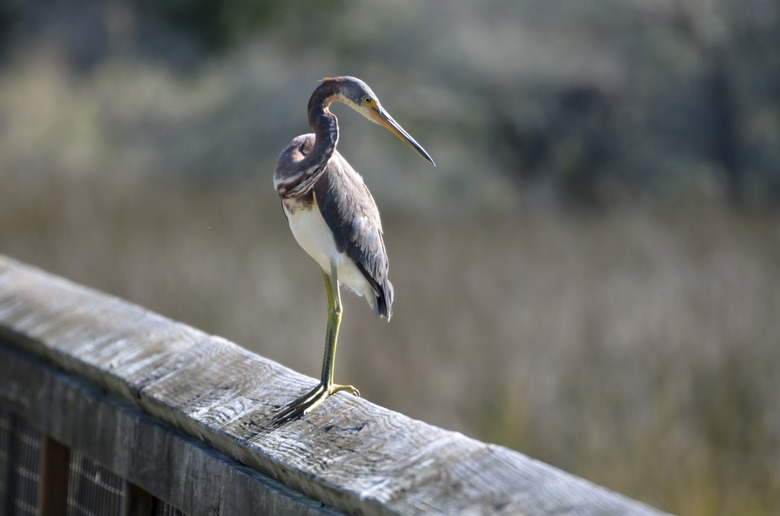What Climate & Weather Is Found In A Freshwater Marsh?
Marshes are a type of ecosystem where land is covered in water for long periods. Marshes can either be freshwater or saltwater ecosystems and are located around the world.
**The weather and climate of these wetland habitats vary depending on the type of marsh and local conditions.**
For example, marshes in hot Northern Queensland, Australia are going to be a lot more humid than those in the cooler waters of the South Island, New Zealand.
Tidal Saltwater Marsh
Tidal Saltwater Marsh
Being along coastlines, saltwater marshes are prone to storms. Tidal marshes help to slow the destruction of the storm as it moves inland and absorbs floodwaters.
Though these are saline environments, the fauna and flora must be able to cope with heavy freshwater flooding events that reduce the salinity of the water. The saltwater Florida marshes and those along the west coast of the United States and Mexico are prone to be hit by hurricanes.
A tidal saltwater marsh's temperature and humidity are influenced by the local ocean and air temperature. Tidal marshes are also affected by regular wave action.
Daily wave action can have more of an impact on erosion in saltwater marshes than extreme weather events. Tide height also impacts the local marsh climate as it changes how far inland and how high the water comes at high tide and how low at low tide, exposing flora and fauna to the hot sun.
Tidal Freshwater Marsh Weather
Tidal Freshwater Marsh Weather
Like saltwater marshes, **tidal freshwater marshes are exposed to the rise and fall of daily tidal cycles.** However, they lie far enough inland that the water is fresh instead of salt. These are often areas where the forest and rivers begin to meet the ocean.
Plants and animals must be able to survive the drying weather during low tide and the water saturation during high tide. During very high tides, like spring tides, these freshwater marshes are often exposed to more saltwater increasing the local water salinity. They must also be able to cope with high volumes of freshwater during storms.
Inland Freshwater Marsh Weather
Inland Freshwater Marsh Weather
Inland freshwater marshes are found along rivers, lakes and ponds and anywhere with a high water table. Inland freshwater marshes differ from tidal freshwater marshes in that they have more consistent water levels as they are not exposed to daily tides and they are purely fresh water.
Like tidal marshes, inland freshwater marshes are exposed to flood events during stormy weather.
Like other marsh ecosystems, freshwater marsh weather depends on the local climate. Inland marsh weather changes depending on how close to the mountains and ice melt it is. The closer to the mountains, the colder the water supplying the marsh will be.
Additionally, how close trees are to marsh borders affects the local climate as they provide shade which cools the air compared to marshes that are openly exposed to the sun all day.
In Florida, the tidal freshwater marshes are prone to fires. Deep marshes get burned every three to five years while shallow marshes get burned annually or every two years. Fires prevent woody vegetation from growing and overtaking marshlands.
Marsh Animals
Marsh Animals
Marsh animals vary depending on whether they are living in saltwater of freshwater environments. Both ecosystems tend to have wading birds.
Freshwater fish, reptiles such as alligators and water snakes, amphibians such as frogs or newts, mammals including moose or deer and invertebrates including dragonflies and mayflies are often found in freshwater marshes.
Saltwater marshes have saltwater fish but may also have marine species such as shrimp, crayfish and shellfish.
Marsh Plants
Marsh Plants
Marshes tend to be dominated by herbaceous plants and grasses. Trees rarely grow in the waterlogged soil of marshes. In saltwater marshes, the plants must have a high salt tolerance. Marsh plants are often annuals and change seasonally, but biennials and perennials also live here.
Waterbirds often live and nest among the marsh plants. Insects and fish use marsh plants to lay their eggs. Many species eat the fresh foliage. At high tide, fish use the marsh reeds to hide from predators.
References
- University of California Museum of Paleontology: The Freshwater Biome
- Floridian Nature: Fresh Water Marshes – A Freshwater Wetlands and Aquatic Ecosystem
- NSW Government: Plants in Wetlands
- Chris Scott: Endangered and Threatened Animals of Florida and Their Habitats
- Phys: Normal Weather Drives Salt Marsh Erosion
- National Geographic: Marsh
Cite This Article
MLA
Jerrett, Adrianne. "What Climate & Weather Is Found In A Freshwater Marsh?" sciencing.com, https://www.sciencing.com/climate-weather-found-freshwater-marsh-7390024/. 8 July 2019.
APA
Jerrett, Adrianne. (2019, July 8). What Climate & Weather Is Found In A Freshwater Marsh?. sciencing.com. Retrieved from https://www.sciencing.com/climate-weather-found-freshwater-marsh-7390024/
Chicago
Jerrett, Adrianne. What Climate & Weather Is Found In A Freshwater Marsh? last modified March 24, 2022. https://www.sciencing.com/climate-weather-found-freshwater-marsh-7390024/
